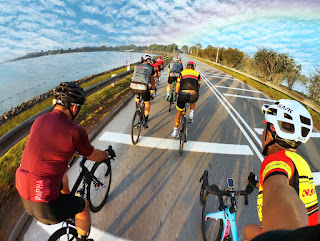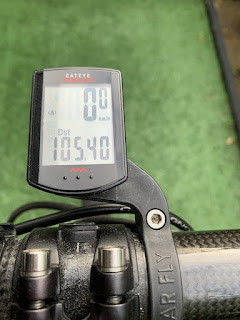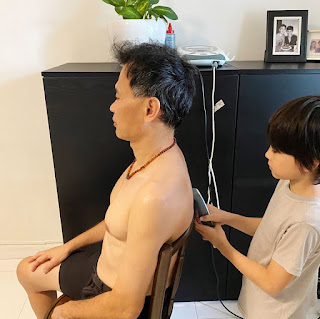 |
| Picture by Jeffrey Keng on 010119 |
Handling the extra social meetings, holiday shopping, festivities and of course, the extra eating while keeping your training intact is going to be challenging for many.
Here are some suggestions to keep your training intact if you keep your long term objectives in mind while keeping your expectations realistic.
I would usually have slightly more time to ride in the wee morning hours during the weekdays the last 2 weeks of the year. Not this year after my recent accident. My only time on a bike currently is on the stationary bike. Not that I have a choice, doctor's orders.
If you're a cyclist, early starts are great these 2 weeks since all school kids are on holidays. No need to drive your kids and definitely less morning traffic as well. Get your ride in early and have the rest of the day free for your family or other social engagements. Personally I find riding or running with your group of friends helpful as they help to make sure you turn up.
Whether it is cycling, triathlon or ultra running, consistency is key. You may not be able to fit in that extra long run or bike ride during this period. What matters more is you try to fit in a session on most days, i.e. cutting overall training time rather than reduce frequency of your sessions. So if you're running an hour most weekdays and 2-3 hours on the weekends, running 30 mins on most weekdays and an hour on the weekend may suffice to keep your running routines, habits and adaptations intact.
 |
| Caught this view on my morning run |
Do leave room for days when you really cannot fit any exercise in. Your child or other loved ones may fall sick, your boss may give you no notice for a last minute project or other stuff can happen. Take a deep breath and tell yourself that you definitely will not win or lose a race later in the upcoming season by missing a workout in December. There will be many other opportunities to train specifically in the new year. You're only getting ready to train in January. Don't sweat the the fact that you are too busy and distracted to follow the strictest training plan.
When I was still competing, this would be the time when I took 2 weeks off training. No swimming, cycling, running or weights training. Just resting, chilling, time with family, eating etc. I'll be raring to go by the time the new year came round. You may want to take time off to recharge too.
The holiday period definitely brings another layer of complexity if you're still training. However, it also provides a chance to celebrate and connect with traditions and people that matter most to us. Personally, it has given me a chance to be thankful since Covid-19 has delivered more struggles than most of us admit.
We already squeeze our training into our typically demanding schedules and this time of the year provides us a chance to slow down and reflect. Merry Christmas to all our readers.







































